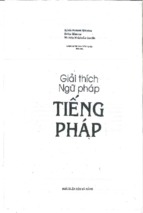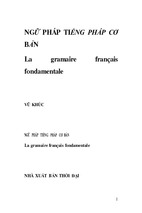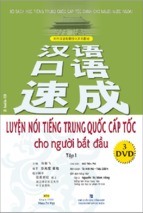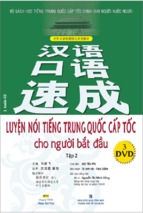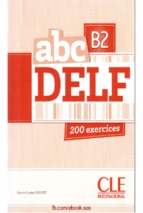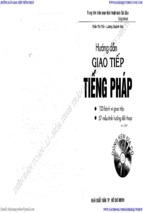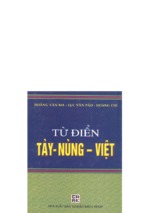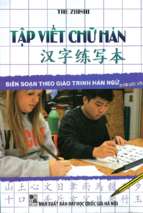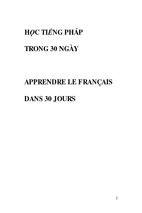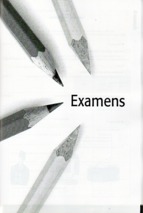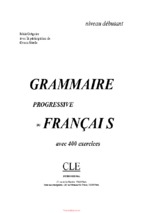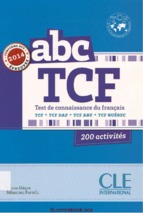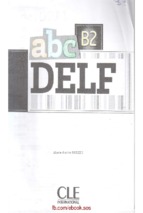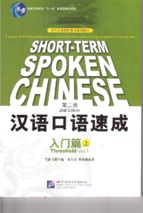/4,
TI
<)
j::*;:;:ii; i;i:i::.',
".,,:r:j
r:a!:{a:!}}:a.:t:r!r::tii{:::$:a;a*t:!::;
I
vrv?
www.qlc.Go.iP
EA=8ffifiFilEfr
I=??
ffih
EL"-i
h]-
i": - :)-
fr
;t#r
r',r
0
rJ.
-;-'-:
]i
r' rfi
(
rltEt i:
itt:\
aa
6
,
Oit!< L iL
j-ir,r.6,i./jr. Lo6t.
lL-i ({*ffi
ru
gofcffi ,r€A i. 6 *
3"
irii,r.6,{tjL.
*
tJr,
L*
nl-to)6Lf:j.-r,,
5iarr.9](
i t rdn n t<(,(,
a - L I:
IJL,L3 t
L
a +,2fr rq$iib4
a
,,rir
tz z* L/:.
nl"Loa+,Lt:t, trJt,
i:frxH
-qfJtsr/r&
E EL =
j
t*/_Lj
Ltf/r
t ti/":rr<'"r)Lr
,,t:
Ltr/"
.a#w.t*lr
4#rtj.
bE+:*+gtafar.
ill$Aa;ii,*,t:,tg.n, ?$.*ati
h/"1q,
* L/:"
1116
U
: ri
a
,1L-e)
t
.L.
6,/a/jr-
6jir,t,
ti{,
: Z <3 in,\ ?LtJ
tr}"1q,
i i:,8.i"/16r.6
urL!.ril,rr.
| t
::
::
.h'
i: IlA :l
L-r 4h'
*
,,/:
lj lj^
,,r.
A
A
,,i
nh
-:-ffijFffii:ftv., BA;E&6*ffitl:iEv.ffi*Ftr.r*
6 J i. hiiafu*Z am vl Wvt tsttte,#
ti
D
n,|,
D
+.
.t4
.ir-
EtElD< ( /:-E v."
;,i'-:
t: taA : a.rr<
L uh
6ri,jl'{,A/jr'
/:r.}:i
:i-Et.
tjj :
4#t*. E4;+6Er;{,gtof,mt+ftfei:ffFuL/:t*rt
Llao(v.* j-r., I;EoL*r ll, 6jir,t.
5 ?'C* tt\ ?Ltr
2
6a#Mwrsht&i:
L alrHL L(v.*f" ("f ,.a. fit#r,trer u(/jrt
tr-ir't. !j@3-lj
/:( brih,r,hL',qa
t,t:
L *i
tr,ji
-e ll
a ( . .$' /:-,L a; s,sffi o *€+ f . H u (. tBffi wg t L /: v. f i: {, ttm L ( v. /: la r b vt* z
q,HF4
D
t
tfa(r..*f"
IthL
r. t (hsi
0*=o#F
1
l.
) 4*tr,
Unit
E
I
!
;,
I
.
&,
i rlt.
(. ra:y ha{ffiFtL(v\*f"
J
'l/ t:r\ t) iiL\
oJ
htr\
#4 > hIEffi
irr\Ji
u ,jt\
ffigIEffi
rtz h ofitlh
Unit O4
t nit 05
I
3 o)t\!< U tJlr 6^/jr'
E*ffiI8ffi
O1
Unit 02
Unit O3
zt
t*.t"
Affi fE7: ;*,$Ao FdE i: A b ri
#E-f;*IE
z< a $aLa
E[E+69
X#r*. *&&ix1jt-ry aHfl',t afiAo<.
6
Step
I
: i rtr'
t a i:ffiFl L< bu) if
_
1
Z Z <3
#<
r.ff#iiA,ffifuir.i4u.#rlirftAer *
"
BitB
tht2fi aU.J.a(ffiE)tt,t
6,i,lJl. ,
EffiA!
id:d
trLLba
-c:)n,t,
t
bt
Z
L
:
&PfrWtffi ( t:a)tt:,L.wrfiJt->ri a*H,Erg-" tEoH * ry 4 .l rtdrF.ataa--*
!.
tirjlfn
Antf)
3
l
tLl:L
b Lr
L./,t-r.a 9 r,r.
t.
tLi-.-|.
+
Step
I
Step
f:dt
*tt
?az-- v l-T+ht:z t t#,u< ar6 (* t
2
lLhLei6Lt:t'
tr(
&t-= y l. O#FHF,SF€od.*t
(tlrL3
V atL
3
t
$/"lit'
at$o)tr frrl"1:F€tffiv'<
E
L L tth
tJt-L*
6'&
+am f
Fl
L:
d^/jl.
tt
u?it'
HtLa /: E i:.
Itt'L*
L
U.lttLbl,t:t\-
t'
*
l*L L trl"
6,{til'li
:t
Ail,& L E rr t] *
"
L tt L* z th,afid)
* /cil,$f;8fr4;2i{ L i:+ - < }^< ( /:-E v'.
(*
t' ,'
*f.
lFffiF'lffiI
fl2fr al F'5 EE A H H U
t
$tJ
6,|rt'
b 4 *9-.*HatF{FE LHI-Y/*,a$atffi*
aa
ji
$ht:\\
a)oF"lE)
t- lc
F"5€fr
I
J
f ,r.
tb
3) &t-=v I o#FgFfiEo Hffili. .D-ITd)ED -ef.
b<
-
O Step
nLLeit'hri\'
1
5e
{, (
n/i\0,
(ffiHI
t
z
bt
litJ
t'B lr
^'i' ''
7a. t rtr&>
L. L lf'elttrr-"frr4lbt
D*t. ./). t t*ilf /3VrL. I ( fh-(vr6l*fo#+<'iffrtr. frv./:L 3l:*rr'
b /sv.i. b LrL* t /u" b* u S;*#H ,'#tfr < &H*'au'tl*. : : r#or4 iutH'
i-( < /i6 v."
O l=oF:*IItul
(unit ot . 02 . 03 . 04' 05) : ff
i r'
trat t\
\trlil,
.*Hl
iltJ
.,
-
L'
t a:*H,IJl (Unit 01 . 02 . 03 . 05) : *ffit
*
9
L(v.6
0fi'
OL
r'Alrt'
+'o 8i 3
l*i
)t fet'ar$Elst.wPgxtFafr
Dl' L LriL](
L i*
ary
d
L
'(.
Afr1firffi, lF:rt., *.H, Ifr
ifilrrDtj. ffiv.(f <"i:4F1f Troitffi!vrr.f" a:rfl.
j60i:si
ii< LDi
Lf,:gi
7/
Di
L
t
6
LtilJ
"E/"lgt
,ry*.H, f€trgn;F1re D&4t 4ltl* L/e. TuWzJ,b+)J+W.p.r.'u(.€rp
L/e li*r9-*r.
=t
L
D@ Li@
ffi(:Li:6{Htt*Lri.
i Lp
VhDr)
tJ ltt\
l! b/"
2l'
Uritfl'
lefr#a't'ffitlEffif 6.1 (unit o+ ' 05) : bbWffiTl*.Zb#rH,ti-o(" ti/r ( . v'6v'
Or,lfL
$lJ
L- L
tF:
r.
i'l:
B 6
btsav.fit-ilffiBtHtrtl6,z(v)*f" .:rlt. /c ( 3 /-aa L iff afiaH,ia
:
$lf
I
Z
ILl"L|a
It bl"
b
^/.
Fo/r Doit
/:rDi:. IkffitAbt< H < frFH tLt f" * te, H.Z(*i < L'fFfUfabv'
r' ,'/. t
h/rLsa
*.-;/:Ev'fi Affi < #RE 6 L*f.
@
a.)'L
TILLIi
1) ISEI
nLLti
a#
I#El ti. t* (.
t
L
6/,ft.
*
L
6t/jh
i)
;6v.(ffi< FdFE-] tr=977'nar'*f"
6 Lr f'< l:/!
*i/,-iit' ltt'
f,
e SA.r:h
|ffi,l'rcffi< FdEl i*. CD i3#.p*75r1.(v.*-tir. I+cEE;{.f Aat rr-("5
fl.f
I
I ( ffii,r.
l-;frA"rfi4< F"lEl
*f ,'b.
tL/'Lsa
+ i_bffiHt L< ( /i 6 v..
*
L
*
*iArit. lir.
€/'tih
1-6v.(ffi < F"5E_l l*, CD i:Sfr75s1-(v\6 aac, zctrLtffi I Arr b@v'< < fi8v.o Efl
{,/"rt'
rii,l:( L
6
3
,'ht
3
al,.ji
t
,D
*lfic/:#t#( 6 a;, *1frt ffiv.(E$tffitrbfrEt d- (L'6 nrot.i 6..$Fd€rr D: *
*
L
3*rf"
l,r f
b L"
tJ'Tt*. f#Zf
V/"Eri
r),1.'F
,'rdl
tZ
i-b
itt'
{/wf,h
) aPfrWa@rt"
a
ali€
ifli €
ftt*ar,
BA?<
roi8*r.*rt a*z t v<*Ert*oa'ino. *
a
trl!r"
"oi{*
z
: t4i{r.
B:I ]
(2')
co#ff,
(2)
B:L
B:l
e
,
1
51.,
6. rieiu-L*'.r<
]
n. Hufr*,,rt+u", L t.L..--,
b. D+, EI*tr(!'ttj5*f"
(3rt I (,r)t
I
&f+a.ert
t:u'.
I
€lr$uu'*rA-tnrf. r#,r:6$$r.*r< rau..
B:[
lo
e. ::, €re.
f - t, Ai *4lLLrl Lt"
tirr#v,rv,rir,i..
ttt
5
b, Siie!'a<"
c. t r"t lJ-.
]
A : r< {,/.a t
Toaf
a. L?,3*E*eLit"
l:uo"ff r :1.$1.15 q.1'a1
a.
A : E)i. ttrr{Jfi
SEg-15*iAL(nlt€ot.
z
A:+E.4*L(tg-wil4>
4a6aaztatLd.tt@
<*5!-l
t:@ol
tt.tl\*
t.
Lbif?2d,L*l'6tuq
-drtu@hq*fr
*lrr:oErnol,l@b&
?,[email protected]
€H=*€a
93, .EeEn16dt€, E! -:o&
kzEtt I €Etq4. + q{{9
l+tE {4rn*
4
ioAEaaofiE
4- €,r{t<'
/6.,\
r6r
a'#4t'
Lt,
<
6
tr6 LA*rrr(f€H L( ( ff3v'.
*
i'< i:&
6,{,tl' ,'hL'
Ufo>mp6oitri.,
tJr'ir,\
CD t:$*-g6
ir-(v.
_
irji#rc1*. fgl$tltnaX,*.+Agta fi-(v. *f.
lf 6t' tlu:a
L
^rI
a{Fakz /
$./t
1)
7
l.
B',r
F"iFgoM+*anV:-A*.
6n,t:h ,'trtil*il*i
/: D L/cHiFEaWXfiiXtfrA /:v'WEI"++lr-L( ( /iEv'.
*ri'btdtt"> /: 4 F{E.i
This book is a workbook designed for the study of the listening comprehension
portion of the new
Japanese Language Proficiency Test which began
in 2010. The new test contains a wider range of
listening comprehension questions and listening ability is measured in various
different ways. This
book offers exercises specially created for learners ofJapanese who want
to take the test so that they
can become accustomed to the test format and get higher scores.
Exercises
in this book include those in which learners can enrich vocabulary and those which
involve reading and answering questions. You may think that these exercises
are unrelated to
listening comprehension, but, in fact, they foster basic skills. Listening comprehension
is just
another part of understanding Japanese. It is an activity in which people comprehend
the gist of
a
story by utilizing various techniques such as knowledge about sounds, vocabulary,
sentence patterns,
context' and topics. Use these techniques efficiently, and practice while reviewing
your
listening
skills in order to get closer to achieving the listening skills ofnativeJapanese
speakers.
The structure of this book corresponds to the listening comprehension questions
in the Japanese
Language ProficiencyTest, but, as mentioned above, the aim of this
book is to foster basic skills to
develop listening ability. Consequently, its contents are not only for
those who want to prepare for
the test but also for those who want to use this book for their regular listening
classes, or for those
who want to do listening exercises at home.
{& Features of
1l
this Book
This book's units are structured according to the
Japanese Language proficiency Test.
Unit
1
Task-based Comprehension
Unit 2
Gomprehension of Key points
Unit 3
Comprehension of General Outline
Unit 4
Verbal Expressions
Unit 5
Ouick Response
2) Thir
book is structured so that you can start with exercises to acquire basic skills and
doing exercises which are close in format to the real test.
Acquiring basicskills lExercisesl
Step
These exercises help you to acquire the necessary skills in order to be able to
answer each test question. There are four exercises: hearing sounds, vocabulary and
expressions
I
I
for listening, hearing grammatical patterns, and understanding the
feelings of the speaker.
Step 2
Checking what you have learned in the
You
will find these
format
Step 3
exercises at
unit
[End-of-unit Exercises)
the end of each unit. These exercises have the same
as the Test.
Answering questions with the same format as the
test
[ActualTest Exercisesl
We have prepared tests with the s"-e-format as the actual test. The number of
questions is different from the actual test, but you
will become accustomed to the test
and be able to checkyour skills with these exercises before you take the test.
3l
The aims of the exercises in each unit are as follows.
O Step
1
lExercisesl
@Hearing sounds (Units 01 .02.03'04'05)
langrage.
If
you do not know about these changes, you may not be able to identi$r words or
grammatical patterns, even those that you know well.
speak
@
: Some sounds can change in spoken
If you do not have many opportunities to
with native speakers, this section will help you to recognize changes in sounds.
Vocabulary and expressions for listening (Units 01 . 02. 03 . 04 . 05) : In spoken
language, there are often words and expressions whose meanings are
understand from their sounds.
In this
section, we deal
difficult to
with onomatopoeic words, mimetic
words, loanwords, words of Chinese origin, and honorific language, and you
and understanding.
guess or
will study listening
grammatical patterns (Units 01 - 02. 03 . 05) : It is difficult to have an
immediate understanding of the relationships between speakers or the directions of objects
@ Hearing
or actions in a conversation. In this section, we deal with modifying nouns, the causative, the
passive, the causative-passive and benefactive verbs. These are grammatical patterns that you
have studied in beginner's and lower-intermediate levels; you should become accustomed to
listening to them, too.
@ Understanding
the feelings of the speaker (Units 04 . 05) : There is more than one
expression that can be used
in a number of different
in a certain situation and we
ways.
express our feelings and intentions
This section contains listening exercises focusing on various
situations so thatyou can memorize avaiety of words and expressions.Youwill also practice
listening to fixed expressions such as salutations which are usefirl to know.
O Step
Z
[End-of-Unit exercisesl
End-of:Unit exercises have the following three
steps.
First, do Exercise 1 by yourself After this, you can check the key points to
-
see
how and where
you need to listen and what you need to consider in order to answer the questions. Then try
Exercise 2 which has the same format.
C Step
3
[ActualTest Exercisesl
We have prepared two tests which have the same format as the actual test. The following table
shows a comparison of the numbers of questions in our tests and in the actual test.
N3
l0
Actualtest
This book
6 questions
5 questions
6 questions
5 questions
3 questions
2 questions
4 questions
3 questions
9 questions
7 questions
.::!;':.:,:1,,:
i!:r,::,:.rr:i
:.:;..,::!::!:,::i:,1.
,1.:*:];:::il.:t :i::t! ji:,:.::r,!l::::l::l:;t:1
:t:i jt.:.::.:::;l
t::uii::i;ti:!;:ii:r::r.:ri::r;
1) lExercisesl
lExercisesl have two sections: reading questions and listening questions.
You do not need the CD for the reading questions. You can check these with the text, so practice
reading carefirlly and understanding these questions.
You
will
need the
CD for the listening
questions. Answer these questions while listening to
the CD. There are different types of questions such as those in which you write the words you
hear and those in which you choose the best answer from the options provided after listening to
a
conversation.
Here are some examples of exercises for understanding the feelings of the speaker .
.,You,can listen to exereises with this symbd,.
'
,,theCp.
Herc,listentotheGD and considar
ens to find tfie best answer.
the
c otf;.'<. *&ciita*it urllttot.
{8il tE' Ha;i;ar< r:.',
&.#26(
itF4".
, L?<
_1
:
AO*;Er:tt't 6E i. L rrbEb$ot-Fa
a h'
a
e
t:tr'"
o+D
6
1
r
@
(flr lal
(r) t I
(2) [ ]
(3) t I
(i] : I
(5) I
l
+8, EjFLt< iLtJvillro
a. L&, $*l:*t{,L*-t-.
B::al
:otFff, }uo'di:;1.&!'(6!.1'("Lr ira
{: t}lt/-.
B:i l
,r , Hii. rru.+H4ia.#1.(!,rirji..
B,t l
r : r:(:i6D *fr.6, UleiUi*'-r< r:*u..
B:I l
-r, €rr*uu.iitF-trrr. rr'.t 6#Lrr:ir ( r::u."
B:l i
a-
+oa D5
4LildD*tAlr, Lr.L
b. t+. itta < !'tr*
c. +l!liift-l-h,
d, ii, {0.
e- ,.1!':+tl"
l"d-.
"
b. J:fi€u'r*<.
o.
c. Btr.r) *J-.
a. &"fa,tur+tr.
\'
f. r,. via*fl,LlLt:.
;.zr\
cDtdl'u. **cnraiirutA'trr6€ol:,
{ts| ffit rr'€otr x tir,<<,:a.'" utrd.iaa;ttal*t.
(fl) l6 L6L, E+Arli!'6-L+L'*fr\l
Otcl
9l"l
€'i"l
etcl
I ttoE*. -dt:r' 6ri(L'l:t* t!.it'i-tr.l
ot I ot I ot I ot l
(2) er, tn'c i" €41:Ell:61"r!'r'L,e''l:I"l
or I @t 1 @l I @l l
(3) ltiL, 6il D I < irlrrt+irlr.l
ot I @r I Ot I @l l
(4) Ita*tr.
aa,tr2vt l. Lrtljrrt{'lrlrt'trll
Ol I O)L ) Ol I @l l
(s) l3o *o^C-t, Ir',/:fil.
I ( rrilJq * L/:h.l
or I oi I ot I @'t l
t
r
I
il
2l lEnd-of-unit Exercisesl
Herewe
exphin.how,d{t,figl';i;ibiiLi.
Fit:r!,.wOr*,thrOugli:,ith cX' Aiie€;
A .*.
l 6 l "* '
l. FiD('
z. i!'r'S; ,
*E&iiraermnu, rxroiE r.-1.
t
ii;iacgtrsFdazg<"
:@f"iFE(u. cfEF"iaftL,z< raL,"
znralie*r,r. ro
t t'i +ai6*t. Ht,*r,t,oa1 ..^aht< t:tt,,
<
Z getartrr':Hfil& l!+il,t
- 7 r) t Et&r 64'.til<
3 6, -,sgE:atH! \2. Hfr #o+a I etiattl t4x i & 2..\:" "
-o, t L botula) ai. *S$Aion:ma. E#r.i,;r,zr& < *ar r *
z. r*r t >ln€a <.
4. fdE,'ai <,
Eit
r, ;
:i. cD aEFL'rp,3€ I ?&L.rar < tFr," - { a^- tt. 2 r J I L y > | )t
b, t ti' 4, & ZI a 3.t t-n at L t a " ? ae) L, ftgz ^<. Eiir.msa*,r,
i4lLri.
Tr.k-bsed conprdensior exer.res
:r€ncEs dd qnesdo6;
can be done
in
thB following
us.
1.
Ltte, to briedns
b es, vatding Frhtcd choias (bftes or illstudon* 3 Lbten
- 6. qlBdons .Fh, od choo* ihe b6t answer fom anong thc cioices. In these hd of_udr
ds,
*
2, LGren
pade s.ltug ks!,based
CD, md solre ExeEhe 1. You
diry.
N*,
-F4#E
=lqtr),
solw rhe extrd$s
conpreheDston *erct€s
wit hde
placti.ily
+46!trEfttrHln,+tu
the
in
d
3
doE e&.
wl: FF, [*en to
scdtr &d hinr in 6e tolosng
hodse
pagc,
e Ft dF
on
:=.g€ffiS&4.
,n-__.;j'
F. olj
rFpE dqi!,
"&a.44". J]' cD
2iFE
4u
There are keys and hints that
2.
dqr*;
=.n+H i+id
Next, read the transcripts.
you ctn
Flflr.
+c .T4 +41e1 i:e 4+r+ ?+qq
: +9. 3€+r+ 43+S E:4.
2 .i4q 9: dq4 ( 3,tli grl:! ) eg
=
: 'lrl + d :tE€ :n cE'l +qlr] 7l*
.i:]e +4r ql!:1.ri 6tqlg 94=,J4
:= EI 34 r: +ol edrle. r|3 ltq,tq l
+4*at'i. r49. +dt 2 .11tr1 Srnq SatE
tollEElr,;* L(t' tt " iqidya
n'i:tln'.
p, ao. XS:aa$Ea <2
4. G&riEi < ,
Tt"
o ltnH4*zf,Haala<.
@ HrFl* h(rra*fi& la++4 ) r) t FLt&rf 6*YZil< "
^
iL a.n.
O A i-ESE:IEEfu \(. i*frtro+t6E6ifi*ntEzA
.@ t* t b@F"lEl ?d,'#E4B@P,3gt-. qHr:i&u'Va) <-trt 6bE-uzaar\t
),.
sh;t@tr5*ctube5bnrh
r
a==94* UEiefi€.
!l4"Jq +e +ta el q9t {4dr
9+q
ii, rirrh.
.....a,
.r.
ofiG-a-t
?tEr3-h.
.iii, 3 0i Er:1,/:E)' t) o@fiLflq<
3. :66r:a:r.ttt'.
F: EIL.rth" VaLJanr., b, .afX
M :
4 >
dv'\',r&'. e,oa, @EiZi-l2-A-L
r.i< 6 L'L'ittr-"
M : lll:,|t,: i 1'1. fAEriEi $o@igArl,
:Ta*li uta+*itiu'L'tt3 rtri"
F : rartr'.
@f2]{!,jpda$4r
t.ii((ti:1..
M:r'Li*D*L/."
'*oT.uro <-tt,z*.-r*"
qL
a
lP-gt) bt<>f
- Xem thêm -

